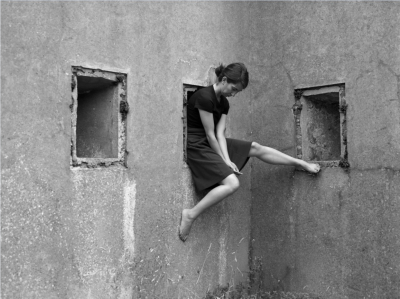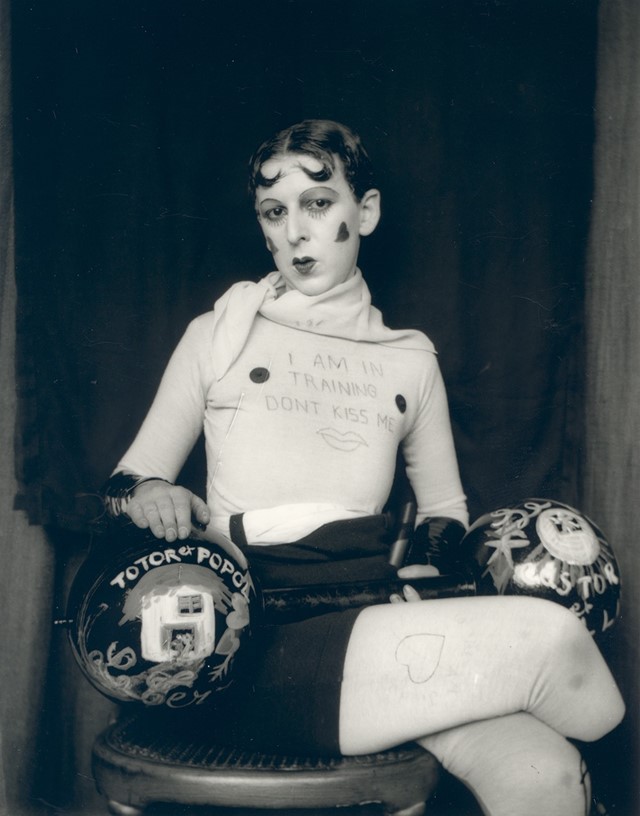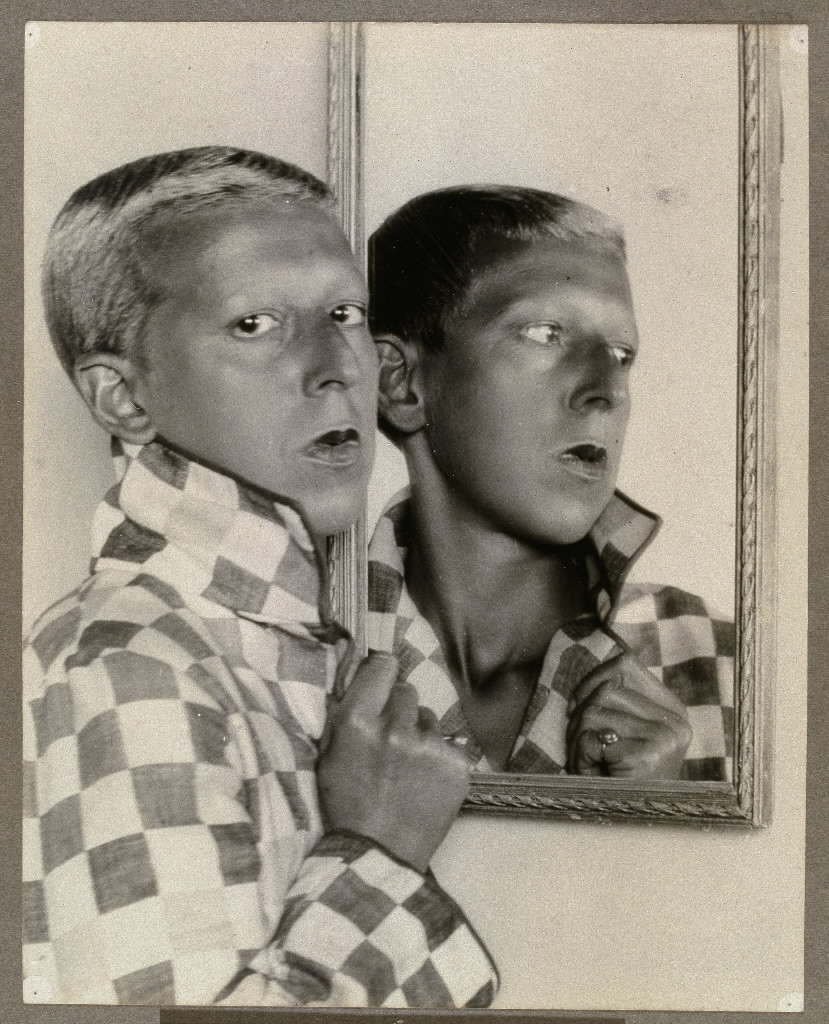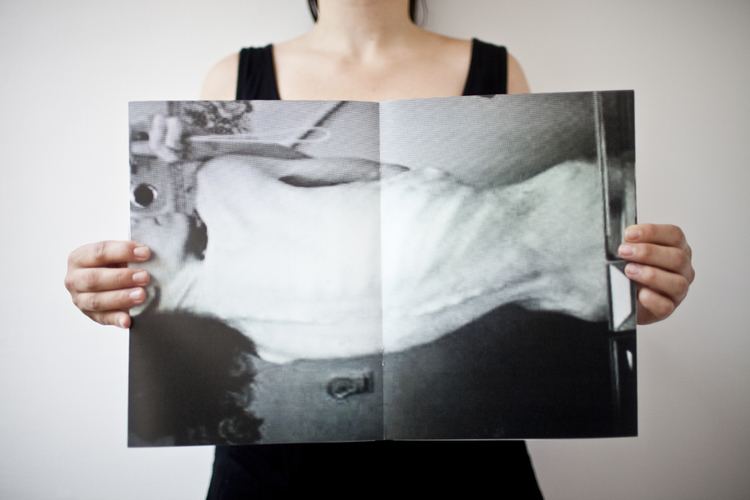Claude Cahun
Claude Cahun was a French lesbian photographer, sculptor and writer. She has attracted what amounts to a cult following among art historians and critics working from postmodern, feminist, and queer theoretical perspectives. She is most remembered for her highly staged self-portraits and tableaux that incorporated the visual aesthetics of surrealism. Many of Cahun’s portraits feature the artist looking directly at the viewer, head shaved, often revealing only head and shoulders (eliminating body from the view), and a blurring of gender indicators and behaviours. Cahun made work for herself and did not want to be famous. It wasn’t until 40 years after her death that her work became recognized. In many ways, Cahun’s life was marked by a sense of role reversal, and like many early queer pioneers, their public identity became a commentary upon the public’s notions of sexuality, gender, beauty, and logic. Her adoption of a gender neutral name and her androgynous self-portraits display a revolutionary way of thinking and creating, experimenting with the audience’s understanding of photography as a documentation of reality
Laia Abril
Abril takes photographs associated with eating disorders, rape, abortion and sexuality. Since 2010, Abril has been working on various projects exploring the subject of eating disorders. Abril is a thoughtful conceptualist who tells metaphorical stories about difficult subjects using a mixture of research and whatever raw material comes to hand: found photos, her own images, family photographs, personal testimonies, official archives, interviews and diaries. “There are so many stories,” says Abril, “and it was important to find ways of telling them visually. Her work typically studies hard , painful subjects that seem difficult to talk about.
Photographers Cahun and Abril both relate to the theme of identity. They send a strong message and address serious matters that should be publicly discussed and accepted. Both photographers express how people are worried about how others view you as a person. They both express sexuality in their work, Cahun’s work protested gender and sexual norms, Abril had a project that began with the intention of depicting notions of femininity of the young lesbian community in New York:








